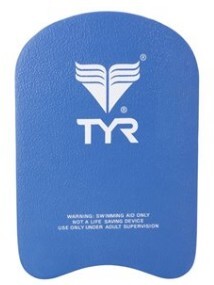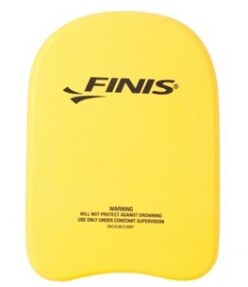This is a great question, with so many different types and brands of kids kickboards - it can be very confusing to know which swim kickboard is best. To begin, it is absolutely true that there are more and less beneficial kickboards for the age and ability of the swimmer. The lifespan of a great swimming kickboard, may last a person 3-4 times longer before needing to be replaced, when compared with another. This brief article will help guide you to pick which one may be best for your child.
Note: I am speaking from my own professional experience and am not intending to speak for all coaches. Included with each age group is a recommended type of board and rationale. A kickboard is not a lifesaving device. It needs to be learned how to be used safely with a certified and qualified swim coach.
Kickboards for Toddlers & Preschoolers Ages 2-5
With this preschool age range, our primary concern should be introducing swimmers to what a kick board is and how to use it safely. This will help them develop their ability to learn the ‘kick’ in order to propel themselves forward in the water. It will help them become comfortable to stretch out flat on the surface of the water without fear. Therefore, purchasing a small and soft (or very soft) board is ideal because it will provide optimal safety and introduction to the kickboard. Typically this is referred to as a “Lightweight Foam” or “EVA foam” kickboard. Here is the “Junior Kickboard” by TYR.
- Ages 6-8
- The overwhelming majority of swimmers in this age range are either a.) learning to use a kickboard for the first time or b.) has already learned how to use a kickboard. By the age of 6 children most can learn very quickly how to use the kickboard safely to go multiple lengths of the pool with the help of a great coach. At any rate, purchasing a small or medium sized and soft kickboard is ideal because it will be in proportion to their body size and soft so that they do not feel uncomfortable holding it. Typically this is referred to as “Junior Size”. Here is the “Foam Kickboard” by Finis.
- Ages 9-13
- By this age if a child is learning to swim for the first time it will be best for them to stick to the kickboards recommended for ages 2-8. This does not mean that they are limited in their potential in any way, but it does mean that their introduction to the kickboard should be one that does not compromise their safety. There are kickboards that are made of harder material, which I would not recommend unless the swimmer already has extensive experience with a smaller and softer board. If a young child has extensive use and knowledge of a softer board, it will not compromise their safety to choose a harder board at this time. Typically these are still “Junior Size” but vary on the type of material they are made with. Here is the“Training Kickboard” by Swim Research:
- Adult Kickboards Ages 13+
- At this age, many children have developed their large motor skills fairly well compared to the earlier age ranges. They are more developed and likewise have more flexibility in their choice. Since they are likely more advanced in age, maturity, and motor skills than the former ages - they can choose a harder board without hindering safety as would a very young child. A harder and larger board may even serve to not be so flimsy and support their arms better than a softer one. A bigger child may prefer the adult size so long as they are not super lightweight and pliable in order to provide more support. These include both “Junior Size” to “Adult Size” and both will work. Here again is the “Training Kickboard” by Swim Research:
- One additional comment: Some kickboards are designed with cut-out holes which a swimmer would use to hold onto as they would a shopping cart handle. In my experience from working with hundreds of first time and experienced swimmers, these kickboards (while they feel comfortable to grab in that position) can be detrimental to a child advancing. This is because all of the support is being placed into a closed fist position at the end of the board. Yet, when a child is learning to swim they neither close their fist or place the entirety of their weight (support) at the end of their hand. Rather, they stretch their arms out long and the whole of their arm supports them rather than at one single point. This is why beginning swimmers are typically taught to keep their arms out long and hold the sides of the board. The kickboard is meant to minimally provide some support for the arms only, so that the child learns how to keep the rest of their body afloat and kicking parallel to the bottom of the pool.
- Need assistance from a professional swimming instructor? Hire a Sunsational Swim Instructor to come to your home or community pool today and just keep swimming!
Michael Swain’s bio:
Hi, I'm Michael, I have 12 years experience coaching and teaching swim lessons for children & adults of all abilities and levels - from beginners all the way to professional athletes who have competed at the FINA World Championships. I began coaching in 2006 for Club Wolverine, a USA Swimming Silver Medal Club. Currently, I also coach for Pitchfork Aquatics. I have a Bachelor of Science in Psychology, swam in college Division 1, qualified and competed at the 2012 Olympic Trials.
ABOUT SUNSATIONAL SWIM SCHOOL
Sunsational Swim School is the 🥇 #1 rated provider of private, at-home swimming lessons in America. We have specialized swim instructors for students ages 6 months to adult, beginner to advanced. Featured on ABC, CBS, Impact 100, The List and others, Sunsational instructors have a minimum of 2 years of teaching experience, are CPR certified and insured, and have collectively taught over 302,223 lessons for more than 74,415 students nationwide!





